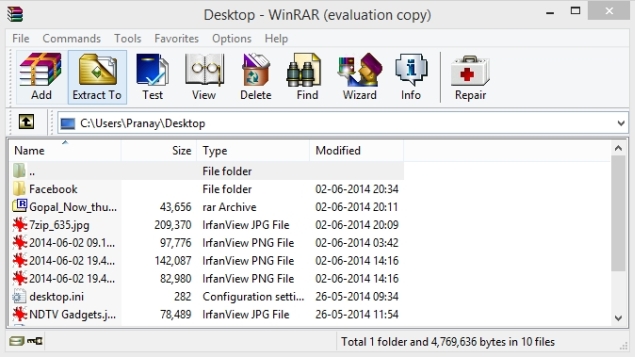
• • • • • • • All You Need to Know About Rar Files RAR basically stands for Roshal Archive Compressed. Rar files are the second most common archive file formats, after Zip files. These are used in abundance on the Internet for high data transmission and sharing.
The RAR for Mac OS X package comes with a 40 days trial period and features the rar and the unrar tools, rar for creating archives and unrar for extracting RAR files. If you want to be able to run the RAR for Mac OS X utilities from any folder on your Mac you can copy them into usr/local/bin, the folder where all UNIX programs a normal user. Step 3: Double-click the RAR file to launch it in the appropriate program, or if you wish to save the file elsewhere on your computer, highlight the file in question and click the “Copy.
People use these rar files to lower the overall size and pack together several files and also folders into a single file. A single RAR file is hence small enough to transfer via mail or other sharing means. Just like other compressed archive files, you need to decompress or unzip the rar files after downloading or receiving them. The file extension of a rar file is.rar (For example, MacMetric.rar) The most beneficial aspect of RAR files is that they feature strong AES-128 encryption and have higher compression ratios.
Mac can easily decompress the Zip files while it requires a different software to decompress the Rar files. How to Open Rar Files on Mac? Mac operating systems are specifically designed to decompress the compressed file formats. They have Apple’s Archive Utility tool that is able to decompress a number of formats like ZIP, GZIP, TAR, etc but, it is not able to decompress RAR. Consequently, you must acquire help from another software in order to open RAR files on Mac. So I’m presenting you a list of best software available for Mac OS to open RAR Files. Unarchiver If you are looking for a solution on how to open rar files on mac, then this tool is the best answer to all your problems.
Unarchiver is a free, small and simple to use software that unarchives several different kinds of archive files. Also, it is an open source program and supports formats such as Zip, RAR (including v5), 7-zip, Tar, Gzip, and Bzip2.
One added advantage is that it can also open ISO, BIN disk images and some Windows.EXE installers also. If you are a newbie for using Mac or even if you are not but you just want guidance, follow these steps in order to learn how to use Unarchiver: Step-1: Download and install Unarchiver from. Step-2: Firstly, open Unarchiver.
Once opened, make sure that the box beside “RAR Archive” is check marked, along with all the other archive types you want to open with the Unarchiver. Afterwards, switch to the “Extraction” tab located at the top of the application window and then, select your save location for the resulting file. Step-3: Now just drag & drop your RAR or any other compressed file onto the Unarchiver’s icon, or right-click the RAR file on your Mac then select Open With and choose The Unarchiver, or double click the RAR file. The Unarchiver will extract the files in that same folder. You can easily access them anytime you want.
UnRarX UnRarX is a Mac OS X Cocoa software that allows you to decompress rar archives. It can also restore corrupted or missing archives using par2.  It is a simple and easy software developed for people who like simplicity. Follow these steps in order to use UnRarX to extract your rar files: Step-1: Download and install UnRarX from. Step-2: Launch the application and drag the rar files you want to extract to the application window.
It is a simple and easy software developed for people who like simplicity. Follow these steps in order to use UnRarX to extract your rar files: Step-1: Download and install UnRarX from. Step-2: Launch the application and drag the rar files you want to extract to the application window.
Or, right-click the RAR file on your Mac then select Open With and choose UnRarX. UnRarX will then extract the rar file in the same folder and you can use them however you desire. IZip iZip is the best alternative for Unarchiver and UnRarX. It is a free, secure and simple to use program that can easily extract the rar. When you open an archive with iZip it appears as a removable disk in your OS X Finder. You can then easily manage your compressed files using Finder just like all the other files you manage. All view modes including cover-flow work fine.